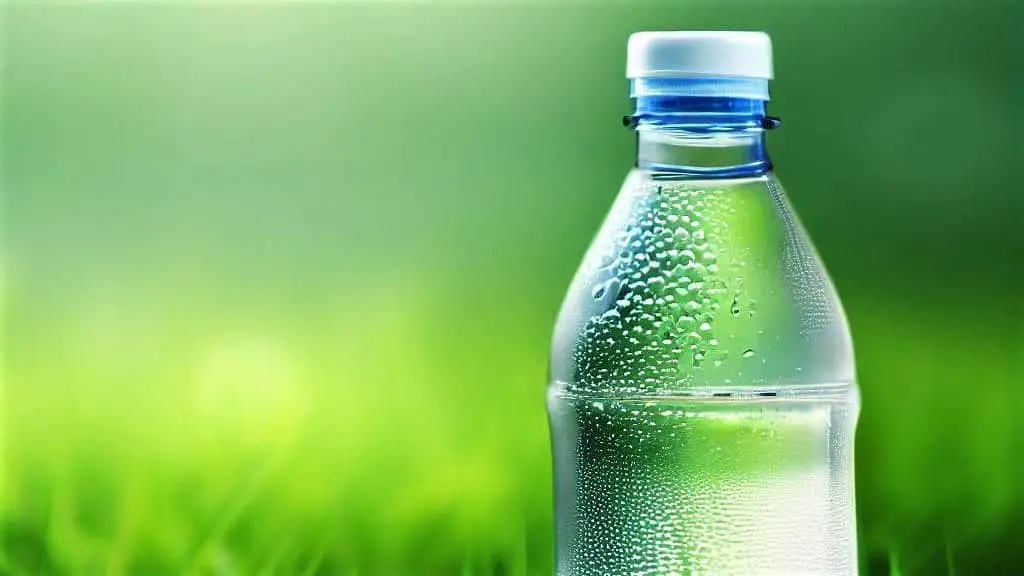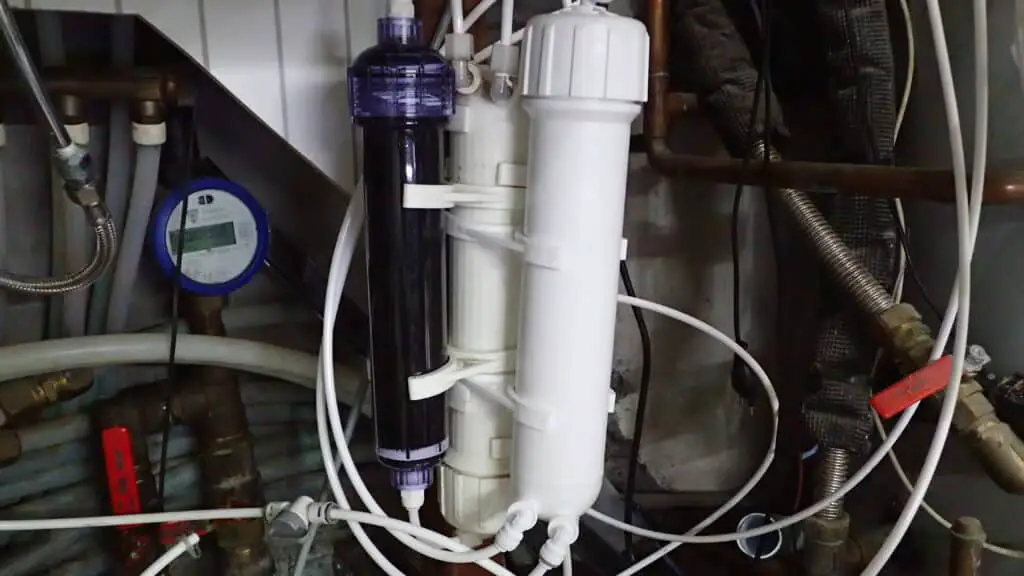You’ve just noticed that the water level in your shrimp tank has dropped a bit due to evaporation. You think to yourself, “Can I just use tap water to top it up?” It’s a common question and one that could have significant consequences for your shrimp.
to top it up?” It’s a common question and one that could have significant consequences for your shrimp.
No, you cannot use tap water to top up a shrimp tank. Tap water contains minerals like calcium that can drastically alter your water’s parameters, leading to issues such as pH imbalance, increased hardness, and potential toxicity.
Ah, the joys and pitfalls of shrimp keeping. I’ve been in this hobby for years, and let me tell you, the learning curve was steeper than the cliffs of the Scottish Highlands. I’ve faced the same dilemma you’re grappling with now.
I remember the first time I topped up my shrimp tank with tap water. The next day, I noticed my shrimp were less active, almost lethargic. I tested the water and found the pH had skyrocketed. It was a lesson learned the hard way.
Over the years, I’ve experimented with various methods to maintain the perfect water parameters for my shrimp. I’ve tried everything from using RO water to collecting rainwater, each with its own set of challenges and triumphs.
So, buckle up, dear reader, as we delve into the labyrinthine intricacies of water chemistry, explore the celestial beauty of shrimp behavior, and unlock the arcane secrets of maintaining a shrimp utopia. Trust me, you’ll want to stick around for this.
What Happens to Shrimp When You Use Tap Water?

Ah, the alchemy of tap water—a seemingly innocuous substance that can turn your shrimp tank into a cauldron of despair. When you use tap water to top up your shrimp tank, you’re essentially inviting a parade of invisible, microscopic invaders into your carefully curated aquatic haven.
These invaders are minerals like calcium, magnesium, and sometimes even trace amounts of metals like copper. While these elements may sound harmless, in the world of shrimp keeping, they are the equivalent of a Trojan Horse.
Let’s start with the pH level. Tap water often has a pH that is not conducive to the delicate balance required for shrimp. When you introduce tap water, you’re essentially throwing a pH grenade into the tank. The pH level can swing wildly, and shrimp are sensitive creatures; they don’t take kindly to such abrupt changes.
It’s like suddenly changing the background music from a soothing melody to heavy metal; your shrimp will be stressed, and stress in shrimp can lead to a weakened immune system and increased susceptibility to diseases.
Then there’s the issue of water hardness. Tap water often contains minerals that contribute to general and carbonate hardness. These parameters are crucial for molting, but too much of a good thing can be disastrous.
Excessive hardness can lead to failed molts; in the shrimp world, a failed molt is often a death sentence. Imagine wearing a suit of armor that’s too tight and then trying to escape from it. That’s what a failed molt is like for a shrimp.
And let’s not forget about chlorine and chloramine, the disinfectants commonly found in tap water. These chemicals are designed to kill bacteria, and they don’t discriminate. They’ll kill the beneficial bacteria in your tank, disrupting the nitrogen cycle and creating an unstable environment. It’s akin to setting off a biological bomb in your tank, annihilating the microscopic ecosystem that your shrimp rely on.
So, using tap water is not just a matter of adding H2O to your tank; it’s more like playing Russian roulette with your shrimp’s health. Each drop of tap water is a potential bullet, and the gun is aimed squarely at your shrimp, make sure whenever you use tapwater to use a dechlorinator .
.
How Do Minerals in Tap Water Affect Shrimp Health?

Ah, minerals—the building blocks of life, yet the architects of doom in a shrimp tank when introduced via tap water. You see, minerals like calcium and magnesium are not just elements on the periodic table; they are potent actors in the aquatic drama that unfolds in your shrimp tank. When you use tap water, you’re essentially casting these minerals in roles they were never meant to play, leading to a tragic performance that could spell the end for your shrimp.
Let’s consider calcium, the diva of minerals. In the right amounts, calcium is essential for shrimp, aiding in the formation of their exoskeletons. But introduce too much of it through tap water, and you’ve got a melodrama on your hands.
Excessive calcium can lead to overly hard water, making it difficult for shrimp to molt. Imagine being trapped in a suit of armor that’s become too rigid, each movement a Herculean effort. That’s what it’s like for a shrimp in a calcium-saturated environment.
Then there’s magnesium, the supporting actor that can steal the show if given too much screen time. Magnesium is necessary for various biological processes in shrimp, but an overdose can lead to a skewed magnesium-to-calcium ratio, disrupting the delicate balance needed for successful molting. It’s like adding too much salt to a dish; the original flavors are overwhelmed, and the result is unpalatable.
And let’s not overlook trace minerals like copper, the villain in our aquatic tale. Even in minuscule amounts, copper can be lethal to shrimp. It’s the Iago of minerals, sly and deadly, wreaking havoc in the background.
When you use tap water, you might unknowingly introduce copper into your tank, and even the tiniest amount can lead to a mass die-off. It’s a silent assassin, taking out your shrimp one by one until the tank is a graveyard of fallen heroes.
So, when you use tap water laden with minerals, you’re not just adding water; you’re introducing a cast of characters that can turn your shrimp tank into a Shakespearean tragedy. Each mineral plays its part, and the end result is often a tale of woe, full of sound and fury, signifying the death of your beloved shrimp.
What Are the Best Alternatives to Tap Water for Shrimp Tanks?

Ah, the quest for the Holy Grail of shrimp keeping—the perfect water source. If tap water is the villain in our aquatic epic, then what are the heroes that can save the day? Fear not, for there are alternatives that can turn your shrimp tank from a dystopian wasteland into a utopian paradise.
These alternatives are not just options; they are lifelines, each with its own set of virtues and challenges, akin to knights on a quest, each with their own strengths and weaknesses.
Let’s begin with Reverse Osmosis (RO) water, the knight in shining armor of the shrimp world. RO water is the epitome of purity, stripped of all minerals and contaminants. It’s like a blank canvas, allowing you to paint your own masterpiece by adding the exact minerals your shrimp need.
Using RO water is akin to cooking with the finest ingredients; the end result is bound to be exquisite. However, the RO system itself can be an investment, both in terms of money and maintenance. It’s like owning a luxury car; it’s fantastic, but it comes with its own set of responsibilities.
Then there’s distilled water, the monk of the shrimp world—pure, simple, and unadorned. Like RO water, distilled water is free from minerals and contaminants, but it’s more readily available and doesn’t require any special equipment.
It’s the ascetic option, requiring little but offering much. However, distilled water also needs to be remineralized to suit the needs of your shrimp, turning you into an alchemist of sorts, carefully adding minerals to create the perfect potion for your shrimp.
Rainwater is another alternative, the Robin Hood of water sources—free and bountiful, but with a touch of the wild. Collecting rainwater is like foraging in a forest; it’s natural and sustainable. However, rainwater can vary in quality and may contain pollutants, especially if collected in urban areas. It’s the rogue option, exciting but risky, requiring tests and possibly treatments to ensure its safety.
So, choosing an alternative to tap water is not just a matter of picking an option; it’s a journey, a quest for the perfect water source. Each alternative has its own narrative, its own set of challenges and rewards, and the choice you make will shape the destiny of your shrimp tank. Choose wisely, for the health and happiness of your shrimp hang in the balance.
How Can You Safely Prepare Rainwater for Your Shrimp Tank?

Collecting rainwater is like capturing a piece of the sky, a celestial elixir that promises purity but can sometimes deliver peril. The question then arises: how can you transform this wild, untamed essence into a safe haven for your shrimp? The answer lies in a series of alchemical processes that turn the mundane into the magical, the risky into the reliable.
First, let’s talk about collection. The vessel you use to collect rainwater is not just a container; it’s a crucible where the first stage of transformation occurs. Ideally, you’d use a clean, food-grade container, placed in an open area away from potential contaminants like roof runoff or overhanging trees.
Once collected, the rainwater must be filtered, a process akin to panning for gold. You’re sifting through the liquid, removing larger impurities like leaves, dust, and insects. A simple mechanical filter, perhaps a fine mesh or even a coffee filter, can serve this purpose. It’s a rudimentary but essential step, like separating wheat from chaff.
Now comes the most mystical part of the process: purification. Even after filtering, rainwater can contain invisible contaminants. This is where activated carbon comes into play, the philosopher’s stone of water treatment. Running the rainwater through activated carbon is like casting a purification spell; it absorbs the impurities, leaving you with water that’s as close to pure as nature allows.
So, preparing rainwater for your shrimp tank is not just a series of steps; it’s a ritual, a transformational journey that takes a gift from the sky and turns it into a life-giving elixir for your shrimp. It’s a labor of love, a testament to your dedication as a shrimp keeper, and the reward is a thriving, happy shrimp community.
Conclusion: Safeguarding Your Shrimp’s Environment
Using tap water to top up your shrimp tank is a risky endeavor that can lead to a host of problems, from altered pH levels to mineral imbalances.
The good news is that there are safer alternatives like RO water, distilled water, and even properly treated rainwater. Each option comes with its own set of considerations, but the effort is well worth it to maintain a healthy, thriving shrimp community.
If you have any questions or need further guidance, please reach out. If you can’t find me here, check out Aquarium Shrimp Keeping on Facebook for expert advice and community support.
Happy Shrimp Keeping!
